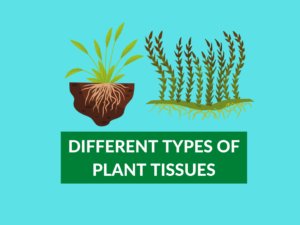Understanding the Difference Between Simple Tissue and Complex Tissue
When it comes to studying the anatomy of plants, tissues play a crucial role in understanding their structure and function. Tissues are categorized into two main types – simple tissue and complex tissue. In this article, we will explore the characteristics, examples, and uses of both simple and complex tissue, as well as highlight the key differences between them.
What is Simple Tissue?
Simple tissue, as the name suggests, is a type of tissue that is composed of cells of a similar structure and function, working together to perform specific tasks. These tissues are often found in the epidermis, which is the outermost layer of plant organs, and in areas where absorption and secretion processes occur. Simple tissues are primarily responsible for carrying out basic functions such as photosynthesis, secretion, and storage.
Examples of Simple Tissue:
1. Parenchyma: This is the most common type of simple tissue found in plants. Parenchyma cells are loosely packed and contain a large central vacuole. They are involved in photosynthesis, storage, and transportation of nutrients within the plant.
2. Collenchyma: Collenchyma cells are elongated and possess thick cell walls. They provide mechanical support to the growing regions of the plants, allowing them to withstand stretching and bending.
3. Sclerenchyma: Sclerenchyma cells have thick, lignified cell walls that make them rigid and supportive. They provide structural support to the plant and are found in regions where flexibility is not required.
Uses of Simple Tissue:
– Parenchyma tissues are involved in photosynthesis, storage, and transportation of nutrients.
– Collenchyma tissues provide mechanical support for growing regions of the plants.
– Sclerenchyma tissues help in providing structural support to the plant.
What is Complex Tissue?
Complex tissue is composed of two or more types of cells working together to perform a specific function. Unlike simple tissue, complex tissue is involved in more specialized functions such as water conduction, nutrient transport, and mechanical support. It is typically found in the inner layers of organs and helps in the overall maintenance and functioning of the plant.
Examples of Complex Tissue:
1. Xylem: Xylem is a complex tissue responsible for water conduction and mineral transportation from roots to other parts of the plant. It consists of vessel elements, tracheids, fibers, and parenchyma cells.
2. Phloem: Phloem is another complex tissue involved in transporting sugars, hormones, and other metabolites throughout the plant. It comprises sieve tube elements, companion cells, fibers, and parenchyma cells.
Uses of Complex Tissue:
– Xylem tissues help in transporting water and minerals from the roots to other parts of the plant.
– Phloem tissues aid in the transportation of sugars, hormones, and other metabolites throughout the plant.
Differences between Simple Tissue and Complex Tissue:
| Difference Area | Simple Tissue | Complex Tissue |
|---|---|---|
| Cell Types | Composed of a single type of cell | Composed of two or more types of cells |
| Structure | Loosely packed cells | Cells are more organized and tightly packed |
| Function | Basic functions such as photosynthesis and storage | Specialized functions like water conduction and nutrient transport |
| Location | Found in the epidermis and areas of absorption and secretion | Found in inner layers of organs |
| Mechanical Support | Provides less mechanical support | Provides significant mechanical support |
| Cell Wall | Cell walls may be thin or absent | Cell walls are thick and lignified |
| Components | Composed of one type of cells (homogeneous) | Composed of multiple types of cells (heterogeneous) |
| Transportation | Not involved in long-distance transportation | Involved in long-distance transport of water, nutrients, and sugars |
| Diversity | Less diverse in terms of functions and structures | More diverse and specialized in terms of functions and structures |
| Examples | Parenchyma, Collenchyma, Sclerenchyma | Xylem, Phloem |
Conclusion:
In summary, simple tissue and complex tissue are two types of plant tissues that differ in terms of cell types, structure, function, location, and composition. Simple tissues perform basic functions such as photosynthesis and storage, while complex tissues are involved in specialized functions like water conduction and nutrient transport.
People Also Ask:
Q: What are the functions of simple tissue?
A: The functions of simple tissue include photosynthesis, storage, and transportation of nutrients within the plant.
Q: What are the functions of complex tissue?
A: The functions of complex tissue include water conduction, nutrient transport, and mechanical support of the plant.
Q: Is parenchyma a simple tissue?
A: Yes, parenchyma is an example of simple tissue. It is involved in photosynthesis, storage, and transportation of nutrients.
Q: What is the main difference between simple tissue and complex tissue?
A: The main difference is that simple tissue is composed of a single type of cell, while complex tissue is composed of two or more types of cells working together.
Q: Where are complex tissues found?
A: Complex tissues are typically located in the inner layers of organs, such as the xylem and phloem found in vascular plants.


